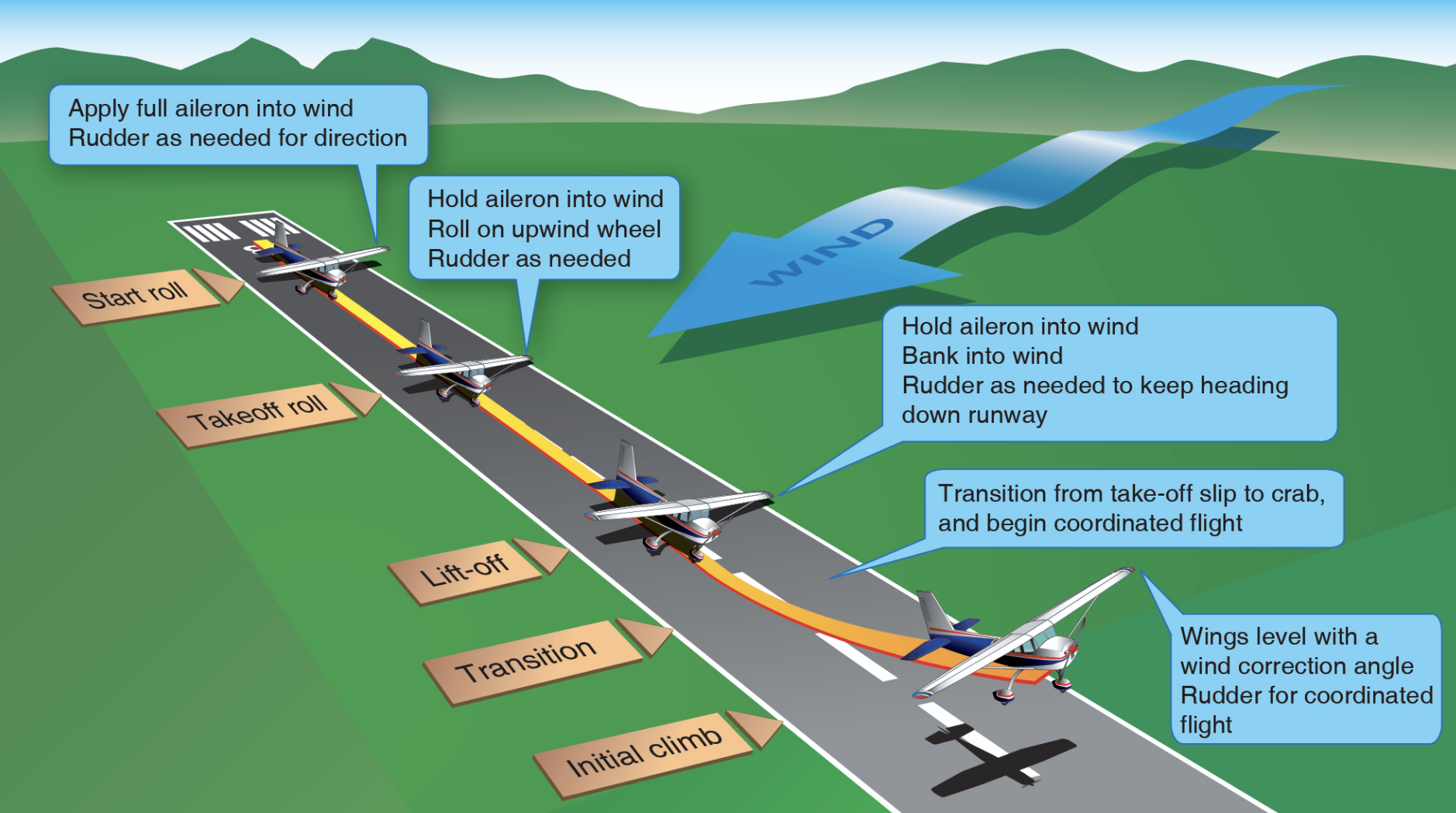- Takeoff principles
- Control effectiveness
- Left-turning tendencies
- Ground effect
- VX and VY
- Flaps
- Crosswinds
- Takeoff distances
| Transition from "driving" to "swimming" through the air 
VX: Best angle of climb, reach a given altitude in the shortest horizontal distance VY: Best rate of climb, reach a given altitude in the shortest amount of time Takeoff distance:
- Increase with weight
- Increase with temperature
- Increase with altitude
- Decreases with headwind / Increases with tailwind
|
- Pre-takeoff checklist, flaps 10°
- Clear the runway
- Roll-out, line up with centerline, nose wheel straight
- Controls: Into wind
- Hold brakes
- Smoothly apply full power, 29-29"
- Release brakes
- Right rudder, accelerate, airspeed alive
- Let airplane fly off the ground
- Smoothly pitch for VX pitch attitude
- Once clear of any obstacles, pitch for VY
- Flaps up
|
- Crosswinds
- Windshear
- Wake turbulence
- Throttle creep
- Engine failure
- Rotation vs climbout speed
|
- Abrupt throttle usage, overboosting
- Center line control
- Lift-off before rotation speed
- Climbing out before VX or VY
- "Chasing" airspeeds, not using pitch attitude
|
- Maintain VY ±5 knots
- Position flight controls into the wind
|
